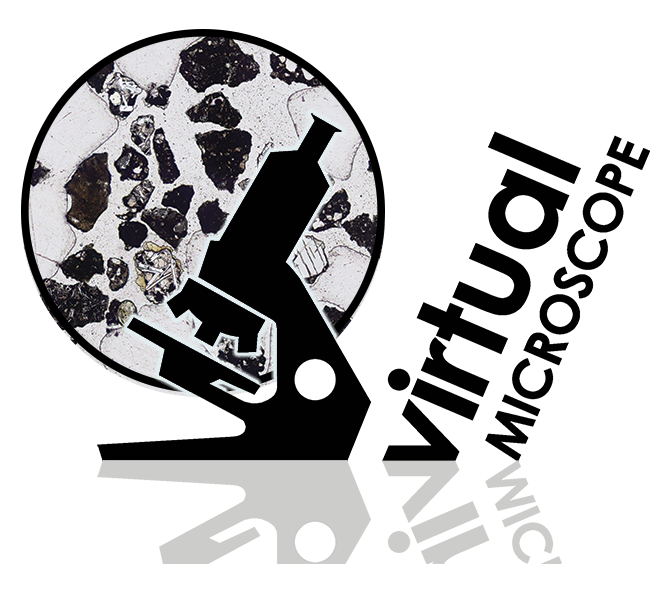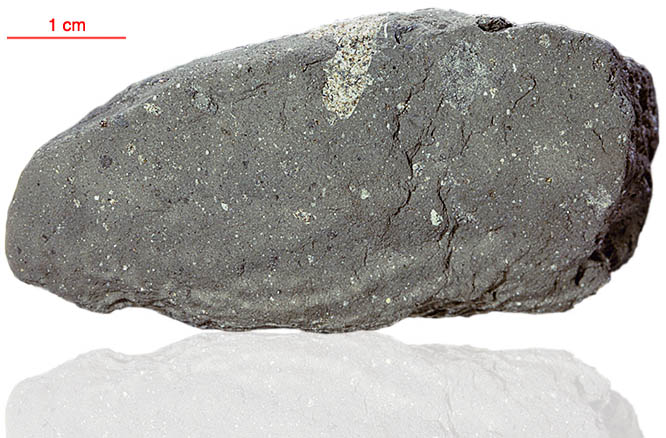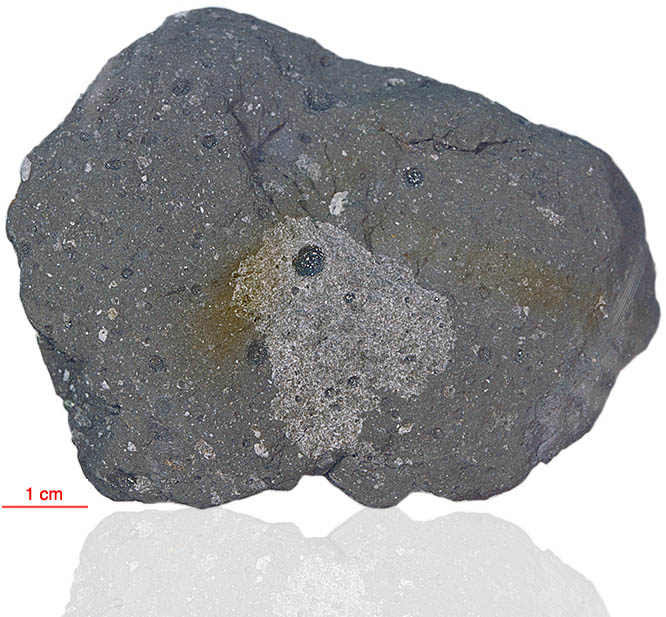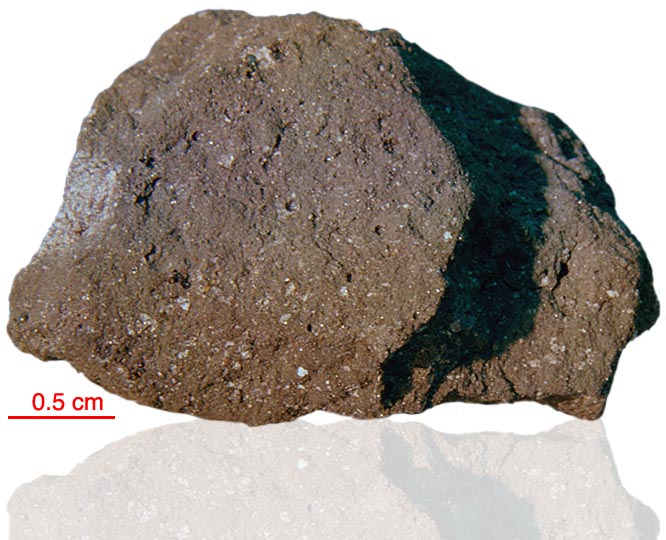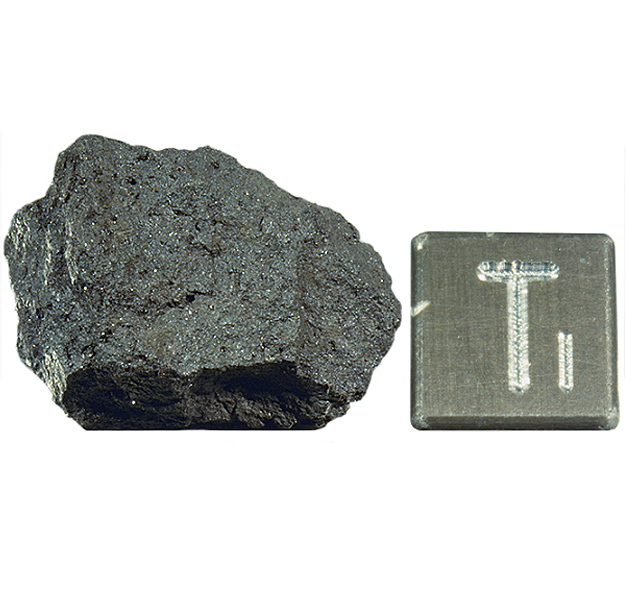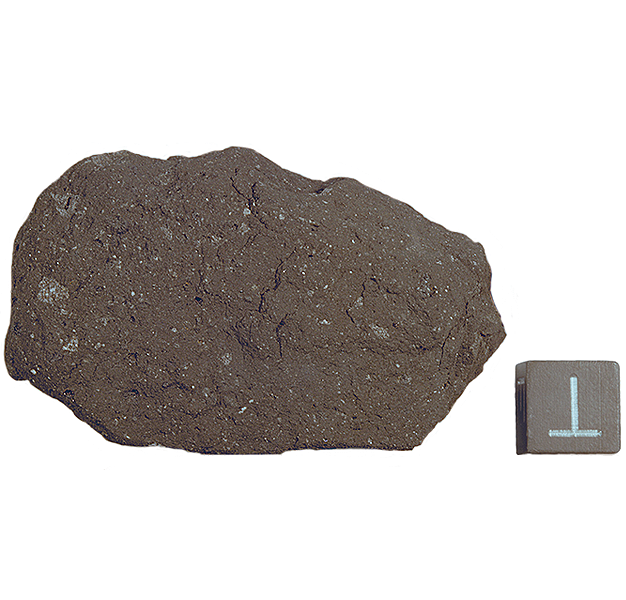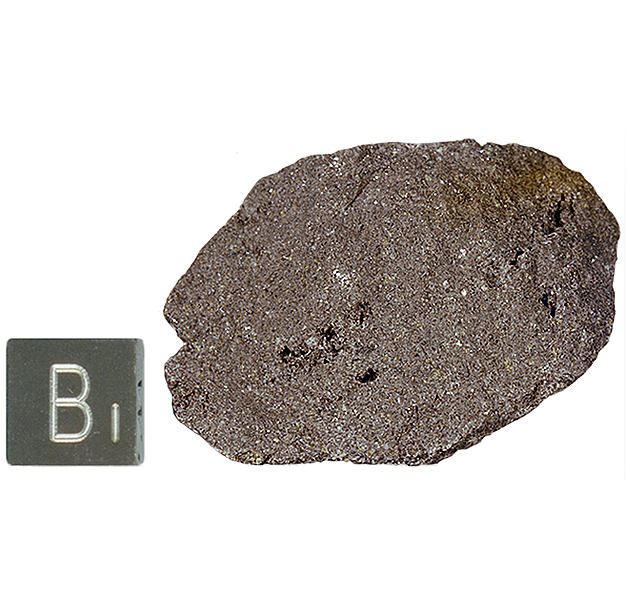
Fact sheet
Sample 10062 is a fine-grained vesicular basalt that crystallised 3.8 billion years ago (measured by Ar/Ar) and as such is one of the oldest lunar mare basalts. Texturally it is a vuggy, sub-ophitic basalt with radiating, lath-like and acicular crystals of plagioclase intergrown with tabular and skeletal crystals of ilmenite, irregular grains of zoned clinopyroxene and olivine. The pyroxene crystals are chemically zoned and more remarkable is the zoning of some olivine which appear to display sector zoning. Late stage cristobalite, fayalite, ulvöspinel, troilite and apatite are also reported from the mesosatsis. Armalcolite is present as dull grey rounded grains forming inclusions in ilmenite. It has been suggested that 10062 is related to other lunar basalts such as 10003 and 10029.
Further details of this and other Apollo samples are here: http://curator.jsc.nasa.gov/lunar/
The Apollo 11 samples create an iconic collection since they were the first rocks collected by humankind that were returned to Earth from another solar system body. The Apollo 11 team collected and returned 22 kg of rock and soil samples.
Apollo 11 launched from Cape Kennedy on 16 July 1969. An estimated 530 million people watched Armstrong's televised image and heard his voice describe the event as he took "...one small step for a man, one giant leap for mankind" on 20 July 1969.

